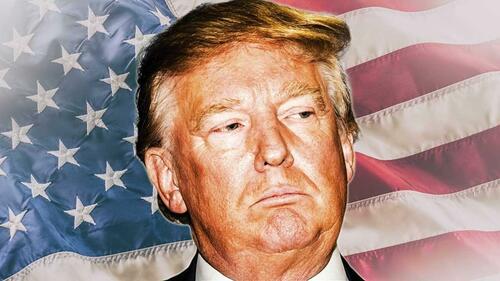The reciprocal tariffs that the world has been holding its breath about are here, stock markets are reeling, and crude oil took a dive. The question now is whether tariffs will hurt oil demand for longer or whether the effect will be transitory, with prices rebounding before long. For now, a majority of observers appear to agree that the tariffs that U.
S. President Donald Trump imposed on all of the country’s trade partners would hurt oil demand quite seriously and continue hurting it for their duration. if(window.

innerWidth ADVERTISEMENTfreestar.config.enabled_slots.
push({ placementName: "oilprice_medrec_atf", slotId: "oilprice_medrec_atf" });';document.write(write_html);} The International Monetary Fund came out with a statement this, in which its chief, Kristalina Georgieva, said the tariffs were a threat to global economic growth. “We are still assessing the macroeconomic implications of the announced tariff measures, but they clearly represent a significant risk to the global outlook at a time of sluggish growth,” she said, adding, “We appeal to the United States and its trading partners to work constructively to resolve trade tensions and reduce uncertainty.
” It is this argument of damage to economic growth that most analysts are pointing to when predicting dark times ahead for oil prices. As Gabelli Funds analyst Simon Wong puts it, while direct tariffs on crude are not “very meaningful”, “The bigger impact on the oil market is the uncertainty in global demand related to President Trump’s tariffs as global expansion drives crude demand growth.” Related: Trump's Tariffs Trigger Biggest Oil Price Drop Since 2021 Indeed, Bloomberg’s Julian Lee wrote in a column Thursday that even though oil itself was mostly spared from tariff pressure, demand for it was bound to be hurt because the biggest driver of demand was Asia, and Trump slapped Asian countries with some of the highest additional tariffs.
Lee sees an economic slowdown in Asia resulting from the tariffs that would inevitably lead to lower oil demand that may last a while. However, there is a counterargument to be made. The tariffs have tanked oil prices.
This means oil is now more affordable for Asian importers. It is an interesting question whether they would miss out on a chance to replenish their stocks of crude—especially in anticipation of an inevitable economic slowdown—or grab it and buy more oil on the cheap. There is also the question of how long these tariffs will remain in effect.
Per Trump’s Vice President, J.D. Vance, the point of these is to bring back manufacturing home.
“That's fundamentally what this is about, the national security of manufacturing and making the things that we need, from steel to pharmaceuticals,” Vance told media, as quoted by Reuters. if(window.innerWidth ADVERTISEMENTfreestar.
config.enabled_slots.push({ placementName: "oilprice_medrec_btf", slotId: "oilprice_medrec_btf" });`;document.
write(write_html);} Not everyone sees it that way, to put it mildly. According to Henry Hoffman, PM of the Catalyst Energy Infrastructure Fund, “The Trump administration's decision to base them on a net-imports-to-imports ratio seems less about reciprocity or fairness and more about wielding a blunt instrument to force negotiating leverage. In doing so, the White House is giving up the moral high ground it often claims in trade talks, opting instead for a high-risk, high-reward gambit.
” This is why the tariffs are unlikely to become a permanent fixture of global trade, hurting growth prospects and sinking oil prices lower. “It’s hard to imagine these tariffs sticking for the long term. They seem engineered more as a provocation—a splashy opening move in a game of tit-for-tat brinksmanship aimed at fast-tracking trade concessions,” Hoffman says, cautioning, however, that they may yet backfire.
If that happens, it would hurt emerging, smaller economies the most. Bad as this is, it means that the biggest oil consumers will remain relatively unscathed. China, which is always the focus of analyst attention when it comes to oil, is already preparing its response to the tariffs—and it’s going to be about stimulus and export market diversification.
CNBC cited several analysts from China as expecting a focus on local economic strengthening action instead of retaliatory tariffs, which somewhat ironically suggests the “blunt instrument” may end up benefiting its target. It’s worth noting—as analysts have done—that China has a growth target to reach, and for that, it needs energy, in other words, oil and gas. China is unlikely to be the only one diversifying export markets and forging or strengthening trade relationships with countries other than the United States—if the tariffs stay.
If commentators see them as a blunt instrument for trade negotiations, like Catalyst Energy Infrastructure Fund’s Hoffman, they will be removed soon enough as long as the target countries commit to “fixing” their surpluses with the United States. It might yet turn out to be a molehill instead of a mountain. Of course, there is always the possibility that the tariffs will remain in place for more than a couple of weeks, which will really set in motion those processes of diversification and trade relationship building.
Like the sanctions on Russia, however, tariffs will, in all likelihood, change patterns in the global oil market but not really kill oil demand, regardless of the short-term effect of the tariffs on economic growth prospects. By Irina Slav for Oilprice.com More Top Reads From Oilprice.
com.
Business

Trade War Just Crashed Crude. Demand Might Be Next

The reciprocal tariffs that the world has been holding its breath about are here, stock markets are reeling, and crude oil took a dive. The question now is whether tariffs will hurt oil demand for longer or whether the effect will be transitory, with prices rebounding before long. For now, a majority of observers appear to agree that the tariffs that U.S. President Donald Trump imposed on all of the country’s trade partners would hurt oil demand quite seriously and continue hurting it for their duration. The International Monetary Fund came...















